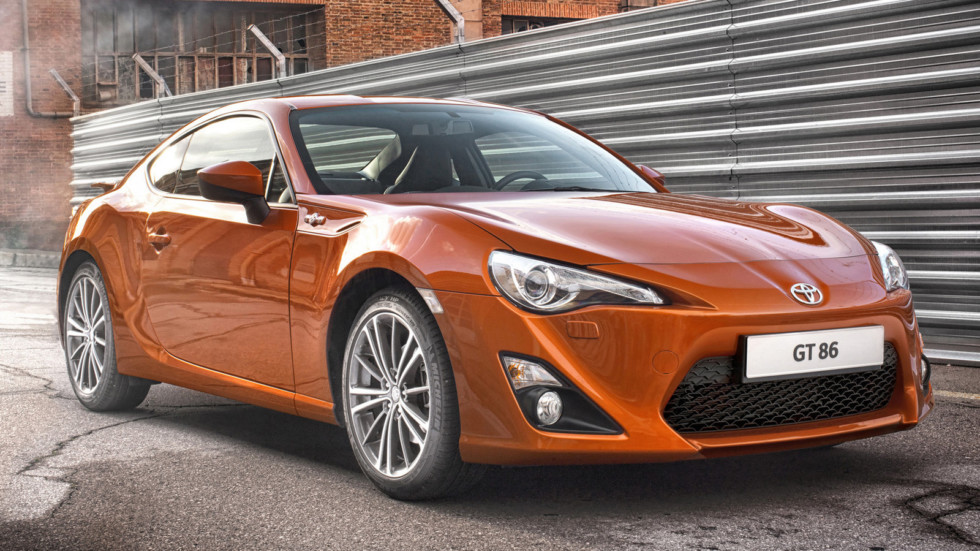Almost sport, almost cheap: is it worth buying a Toyota GT86
 At the time of the creation of this car, toyotovtsy understood that the concept of a front-wheel coupe, once tested on Celica, does not guarantee a warm welcome from buyers, but owned shares in Fuji Heavy Industries (in other words, Subaru) and really wanted to get a car that would remind everyone of glorious past times. The decision came by itself: they extended a hand for a handshake to engineers from Subaru, allocated money for development and enthusiasm for fine-tuning. In Subaru, the idea took the heat, and therefore took their work on the Impreza and “dopili” her trolley for the required tasks.
At the time of the creation of this car, toyotovtsy understood that the concept of a front-wheel coupe, once tested on Celica, does not guarantee a warm welcome from buyers, but owned shares in Fuji Heavy Industries (in other words, Subaru) and really wanted to get a car that would remind everyone of glorious past times. The decision came by itself: they extended a hand for a handshake to engineers from Subaru, allocated money for development and enthusiasm for fine-tuning. In Subaru, the idea took the heat, and therefore took their work on the Impreza and “dopili” her trolley for the required tasks.
The original Levis straight from America!
Hundreds of stores, crazy discounts. Deliver all purchases in one package. Sign up!
The result was a very canonical car: a front-engine layout, rear-wheel drive, ideal weight distribution at 53:47 percent and decent engine power, paired with a manual transmission. There was, of course, the six-speed automatic Aisin A960E, which was finalized to ensure greater reliability: the Japanese understood perfectly well what they were doing the car on which they would not just ride to work. The same idea did not leave them even when working through the driver’s workplace: the center of gravity was lowered to a mark of 460 mm from the ground, despite the fact that the seat was separated from it and even 400 mm. The engine, in addition, as much as possible pushed into the base – this had a positive impact on the weight distribution, and, as a result, on the handling.
The toyotovtsy applied their hands to the motor more noticeably than to the platform: the resulting engine, according to the classification of Toyota, called 4U-GSE, and in the subarovsky term called FA20, became a symbiosis of the best ideas from both companies. Subaru gave him a boxy layout, a “square” ratio of piston stroke and cylinder diameter (86 by 86 millimeters) and speed (cutoff set at 7,450 rpm), and Toyota – its own D-4S combined injection system, combining distributed injection with direct , thanks to which it was possible to increase the output at high speeds. The total figures came out “round”: 100 atmospheric forces were removed from a liter, and a 2-liter engine produced 200 hp. and about 200 Nm. Add to this fairly narrow tires (in the base – this is 205/55 R16) and an optional self-block from Torsen on the rear axle – and you get a good mood generator that runs on 98 petrol, but does not require much either in maintenance or in control.
Fans of beautiful stories and references to traditional values will also be satisfied: Toyota prepared for such requests. The name GT86, of course, is not accidental: it is a reference to both the GT model and the famous AE86 hatch in the drift culture. In confirmation of the seriousness of intentions in Japan, Australia and some other countries, there was even a “homologation” version, which is a blank for further tuning: with unpainted bumpers, stamped discs, without a part of the salon trim, air conditioner, multimedia system and standard friction differential, which for track and drift still changed to a more “hard.” A figure of 86, in addition to the famous name, was reflected in the parameters of the engine (86×86, as we have already indicated above), and even in the diameters of two exhaust pipes coming out of a common muffler: here you can also measure 86 mm.
When buying a used GT86, however, enthusiasm should be left for later, concentrating on the fact that the choice of the car originally sharpened for an active ride should be even closer than usual. Yes, there will be no copies “from under the taxi driver” here, but the chance to run into a rolled-up car rolled up by a “racer” or a forced and “wrung-out” copy is non-illusory.
Yes, boosting the engine is quite expected, but it must be remembered that the engine itself and the gearbox will react to this by reducing the resource. And if the increase in power by 20-40 hp it will have little effect, then more serious refinements will definitely come around: the initially more durable machine will respond with faster wear of the lining of the torque converter and a request to change the oil more often, and the mechanics, which have a smaller torque margin than the automatic transmission, with a banal unpredictability in further operation.
The engines, along with the best features of Subaru and Toyota, inherited their unpleasant features: there are isolated cases of problems with the injection system, as well as oil starvation. In addition, some owners say not the most durable paintwork, which has a small thickness and little resistance to damage. However, in general, both age and car runs do not allow us to talk about any massive or regular problems. When choosing a car, it is simply worthwhile to prefer copies with minimal mileage and interference in the technical part – and preferably from those that were brought to us by an official representative. And, by the way, it is worth taking a look at the TCP on the subject of the power indicated there: before the restyling, it was exactly 200 forces.





